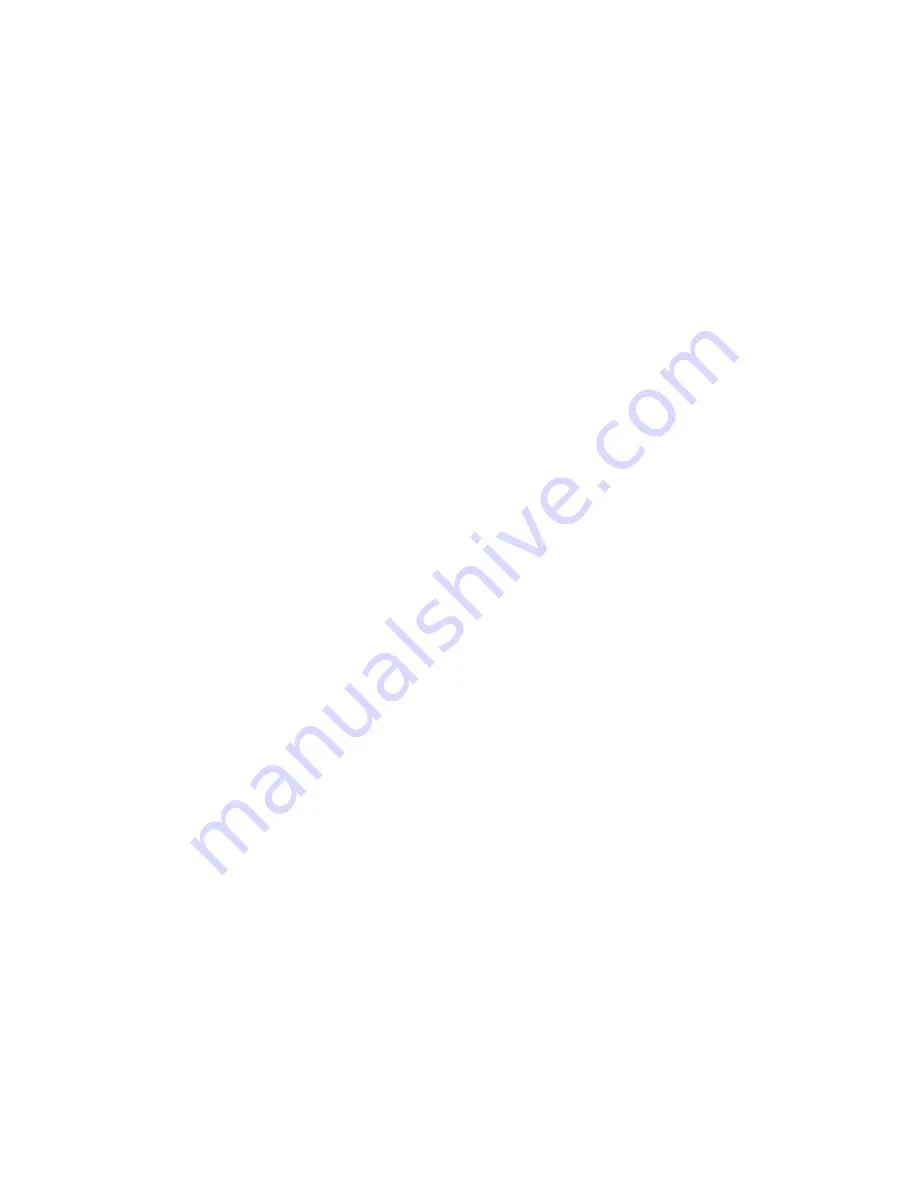
4 of
10
3. Bearing area – units will have two separate bearings, a thrust bearing (3) and roller bearings (4).
a. Thrust bearing may be worn or scored on either, the ID of the shoulder seal groove area of the
bushing or on the face of the thrust surface itself. The roller bearing should be in good working
order.
4. Oversize or elongated dowel holes.
Check both shoe dowels and head/housing dowels
a. Oversize or elongated shoe dowels may have been caused by the vane of the shaft contacting
the shoe. Inspect the shaft at vane weld area for cracks and the shoe dowel holes for cracks.
b. Oversize body dowel holes may be caused by racking and twisting Rotac
®
. This may be a sign
of over-pressurization or improper mounting.
c. Dowel holes may be drilled oversize and rebushed, however, the proper size and location of the
dowel hole must be known to accomplish this repair.
5. Scoring on face of head/body must be repaired
Minor scoring might be removed by polishing with an emery cloth.
Possible causes are:
a. Improper filtration or gritty particles in the oil
b. Side load (axial) on shaft.
6. Cracks in head are usually around bolt circle or dowel pattern.
D. Shoes
1. Cracks across dowel holes or elongated dowel holes.
This usually is caused by the shaft vane coming into contact with the shoe. A shoe in this condition
must be replaced.
E. Seals
1. Cut or shaved seal is usually done when assembled.
This can occur in a number of different ways. Refer to assembly instruction for proper assembly.
ASSEMBLY
The assembly area must be clean and free from all dirt, dust, or other harmful material. A plastic or metal
workbench is the best type bench for the assembly. Parts should be recleaned if necessary. A small pliable
brush should be used to clean all seal grooves, dowel holes, bolt holes and other hard-to-get-at areas.
Remove all burrs that may be on any part. Do not break corners on shaft "A" diameter or housing (see figure
3). Assembly tools are available (see figure 2 and Table 1), If assembly tools are not available use shim stock
to protect the seals (see figure 3). For general seal location see figure 3 and figure 4.
A.
Lubricate all seals and internal parts with grease that is compatible with the driving fluid used. DE-ES
lubriplate by Fiske Brothers is used at the factory. Petroleum jelly also works fine in most hydraulic
systems.
B.
Bearing installation. The installation of the bearings and bushings must be done in the following steps:
1. Place thrust bearing (3) into the bearing hole of the head (or housing).
2. Insure the thrust bearing (3) is seated. Measure the distance that the thrust bearing protrudes
above the face of the head or housing.










